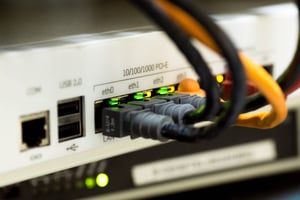In today’s fast-paced and digitally driven world, customer experience has become a key...
Broadband vs Fiber for Business
Understanding the differences between broadband and fiber is crucial for making informed decisions about internet connectivity for business needs.
Broadband is a term that generally refers to high-speed internet access that is always on and faster than traditional dial-up access. It encompasses several types of internet connections, including DSL (Digital Subscriber Line), cable, satellite, and even fiber-optic. The most common broadband connections in many areas are DSL and cable. DSL uses telephone lines to transmit data, while cable uses the same coaxial cables that deliver television service. Both offer relatively fast speeds, typically ranging from 10 Mbps to 100 Mbps for downloads, depending on the provider and plan.
On the other hand, fiber connectivity is a specific type of broadband that uses fiber-optic cables to transmit data as light signals. This technology allows for much faster speeds and higher bandwidth capacity than traditional copper-based connections like DSL and cable. Fiber internet speeds can reach up to 1 Gbps or even higher, making it an ideal choice for bandwidth-intensive activities such as streaming in 4K, online gaming, and running multiple devices simultaneously.
One of the key differences between the two is reliability. Fiber is less susceptible to interference and degradation over distance compared to DSL or cable. This results in a more consistent and reliable connection, with symmetrical upload and download speeds, which is particularly beneficial for businesses that rely on cloud services or video conferencing.
In summary, while broadband is a broad category that includes various types of internet connections, fiber represents the cutting edge of internet technology, offering superior speed, reliability, and performance. As more areas become equipped with fiber infrastructure, it is increasingly becoming the go-to choice for those who need the fastest and most reliable internet connection available.



